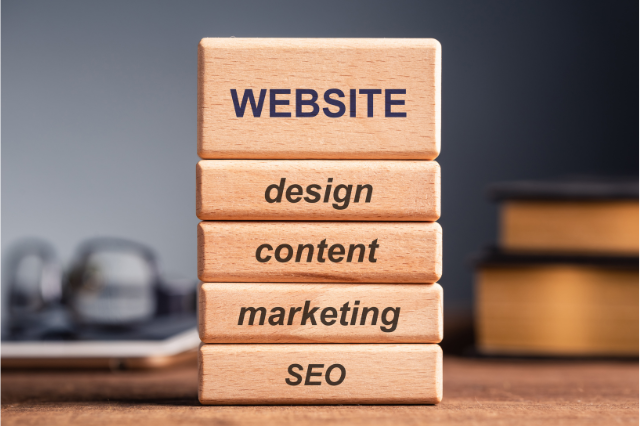What Do I Need to Provide to Get My Website Project Started?
Feeling stuck at the starting line?
What Do I Need to Provide to Get My Website Project Started?
You’ve done the hard part. You’ve interviewed agencies, compared proposals, and finally hired a fantastic web designer or developer.
You’re excited. You’re ready to see your vision come to life…
But then, a moment of panic sets in.
You’re staring at an email from your new developer that says, “Please send over all your brand assets and materials,” and your mind goes blank.
What does that actually mean? What do they need?
Are you going to be the client who holds up the entire project because you can’t get your act together?
Take a deep breath. This feeling is completely normal.
Think of your web team as expert architects and builders.
They have the skills to construct your digital dream home, but they can’t work without a blueprint and the right materials.
Your preparation is the fuel for the project’s success.
This guide is that blueprint.
We’re breaking down exactly what you need to provide to get your website project started, making the process feel less like a daunting mystery and more like an organized, collaborative effort.
Let’s gather your materials.
The Foundation: Core Brand Identity Assets
Your brand identity is the DNA of your website
It’s what makes you instantly recognizable and builds trust with your audience.
Providing these assets from the get-go ensures your website feels cohesive and professionally you.
Logo Files: Beyond the .JPG
Your logo is the cornerstone of your brand on the web.
But not all logo files are created equal.
Sending a tiny, low-resolution image you pulled from your email signature will bring the design process to a grinding halt.
You need to provide your logo in formats that are scalable and editable for all use cases, from the browser tab to a massive billboard.
Provide these professional logo files:
Primary Logo in High-Resolution PNG: A PNG file with a transparent background is essential for placing your logo over photos, colored sections, or anywhere else without an ugly white box around it.
Secondary Logo Variations: Do you have an alternative icon-only version, a stacked version for mobile, or a black-and-white version? Provide them all in the same format.
Favicon: This is the tiny icon that appears in the browser tab next to your page title. It’s often a simplified, miniature version of your logo’s icon. Provide a high-contrast, simple image, ideally 32×32 or 64×64 pixels.
Your Brand Color Palette: The DNA of Your Design
Saying your brand color is “blue” is like telling a chef you want “food.”
For a designer to replicate your brand accurately, they need the exact recipe.
Provide your brand’s hex codes:
Primary Brand Color: Your main, most recognizable color.
Secondary Colors: 2-3 complementary colors used for accents, backgrounds, or secondary buttons.
Neutral Colors: Your go-to shades of black, white, and gray for text and backgrounds.
Hex codes are 6-digit codes preceded by a hash tag (e.g., #4F46E5 for a beautiful electric blue). You can usually find these in any brand guide or by using a color picker tool in programs like Adobe Photoshop or even free online tools.
Tip: If you have a Brand Style Guide, provide it as soon as possible! This document is pure gold for a designer, as it outlines not only colors but also logo usage, spacing, and overall brand voice.
Your Typography: Establishing a Visual Voice
Fonts are the clothes your words wear.
They convey personality, whether you’re sleek and modern, classic and trustworthy, or fun and playful.
Consistent typography is a hallmark of professional design.
Provide your brand font information:
Exact Font Names: Don’t just say “a sans-serif font.” Provide the exact names, such as “Poppins Bold” for headings and “Open Sans Light” for body text.
Web Font Files or Licenses: If you use standard Google Fonts (like Poppins or Open Sans), simply listing the names is enough. If you use a custom or premium font (from Adobe Fonts, Fontspring, etc.), you must provide the web font files (
.WOFF,.WOFF2) or ensure your developer has access to the licensed library.
The Building Blocks: Content & Messaginge
You can have the most beautiful website in the world, but without clear, purposeful words, it won’t convert visitors into customers.
This is the stage that often causes the most delays, but it doesn’t have to.
Website Copy: More Than Just Words
Your web copy does the heavy lifting.
It explains what you do, who you do it for, and why a visitor should care.
You don’t need Pulitzer Prize-winning prose at this stage; you need a clear, organized draft.
Start with this content preparation checklist:
A Basic Sitemap: This is a simple list or diagram of all the main pages you want on your website. It’s the structural blueprint. Think: Home, About, Services/Products, Blog, Contact. Don’t overcomplicate it initially.
Draft Copy for Key Pages: Focus on the core pages first. Write in a Google Doc or Word document. Don’t worry about perfect formatting. The goal is to communicate your message. Your developer or a copywriter can help you polish and adapt it for the web later.
Homepage: Your elevator pitch. What’s your key value proposition?
About Page: Your story, mission, and team bios.
Services/Product Pages: What you offer, who it’s for, and the benefits.
Core Messaging: Boil down your offer into a few key sentences. What is your unique selling proposition? What is your target audience’s primary pain point, and how do you solve it?
Calls-to-Action (CTAs): Guiding the User Journey
What do you want people to do on each page?
A website without clear CTAs is like a store without a checkout counter.
What do you want people to do on each page?
Every page should have a purpose, guiding the user toward a desired action.
Provide a list of your desired user actions:
Primary CTAs: The main goal (e.g., “Request a Quote,” “Buy Now,” “Schedule a Free Consultation”).
Secondary CTAs: Less committal actions (e.g., “Download Our Guide,” “View Our Portfolio,” “Subscribe to Newsletter”).
The Visuals: Imagery and Media
Humans are visual creatures.
High-quality, relevant imagery can make the difference between a website that feels generic and one that feels authentic and engaging.
Professional Photography: Showing, Not Just Telling
Stock photos have their place, but nothing builds connection like original photography.
It shows your real team, your real products, and your real workspace. It builds authenticity.
Gather these types of original photos:
Team Photos: Authentic, high-resolution headshots and candid photos of your team in action. Avoid stiff, overly posed corporate photos.
Product/Service Photos: If you sell products, provide multiple high-quality angles, photos of the product in use, and close-ups of key features. For service-based businesses, photos of you delivering the service are powerful.
Office & Workspace Photos: Images that convey your company’s culture and environment.
If professional photography isn’t in the budget, be strategic about sourcing stock photos.
Look for images that feel genuine and align with your brand’s aesthetic, avoiding the cliché “handshake in a boardroom” trope.
The Legalities: Logos, Licenses, and Credits
This is the most commonly overlooked category, and it’s crucial for staying on the right side of copyright law.
Don’t forget these critical items:
Stock Media Licenses: If you’ve purchased any stock photos, videos, or icon sets, have the proof of license ready to provide. Never just send a downloaded image file without its license.
Third-Party Logos: If you want to display client logos in a “Our Clients” section or partner logos, you must have written permission to use them. Simply having a high-resolution file of another company’s logo does not give you the right to publish it on your website.
The Technical Essentials: Logins & Integrations
This is the “keys to the kingdom” section. Providing secure and correct access ensures your developer can actually build and launch your site without unnecessary back-and-forth.
Access Credentials: The Keys to the Kingdom
Your developer will need access to the services that will host and manage your website.
The most secure way to share these is through a password manager (like LastPass or 1Password). Avoid sending plain-text passwords in email.
Compile login details for:
Domain Registrar: The company where you purchased your domain name (e.g., GoDaddy, Namecheap, UltraHost).
Hosting Provider: The company where your website’s files will live (e.g., WP Engine, SiteGround, your own server). Provide cPanel, FTP, or SSH access details.
Content Management System (CMS): If you’re using WordPress, provide an administrator-level login. For other platforms like Shopify or Webflow, provide the appropriate owner-level access.
Third-Party Integrations: Connecting Your Tools
Your website likely doesn’t live in a vacuum.
It needs to talk to other tools you use to run your business.
Making a list of these upfront allows your developer to plan for these integrations.
List all external tools you use that need to connect:
Email Marketing Service: (e.g., Mailchimp, GetResponse, aWeber), API keys may be needed.
Customer Relationship Management (CRM): (e.g., Salesforce, HubSpot) – often requires integration.
Scheduling Software: (e.g., Calendly, Acuity Scheduling) – provide login or API details.
Analytics & Tracking: Your Google Analytics 4 property ID and/or Meta (Facebook) Pixel ID.
E-commerce Platforms: If you’re connecting to a specific payment gateway (Stripe, PayPal), have those details handy.
API Keys: For any other custom software integration, you’ll need to generate and provide the necessary API credentials.
You're Ready to Launch!
See?
That wasn’t so overwhelming once we broke it down.
By gathering these assets into a dedicated folder or shared drive, you’ve transitioned from a passive client to an empowered, prepared project partner.
You’ve provided the blueprint and the materials.
Now, your expert builders, your web team, can get to work, transforming your vision into a powerful, functional website that drives your business forward.
The foundation for a smooth, efficient, and successful project is set.





